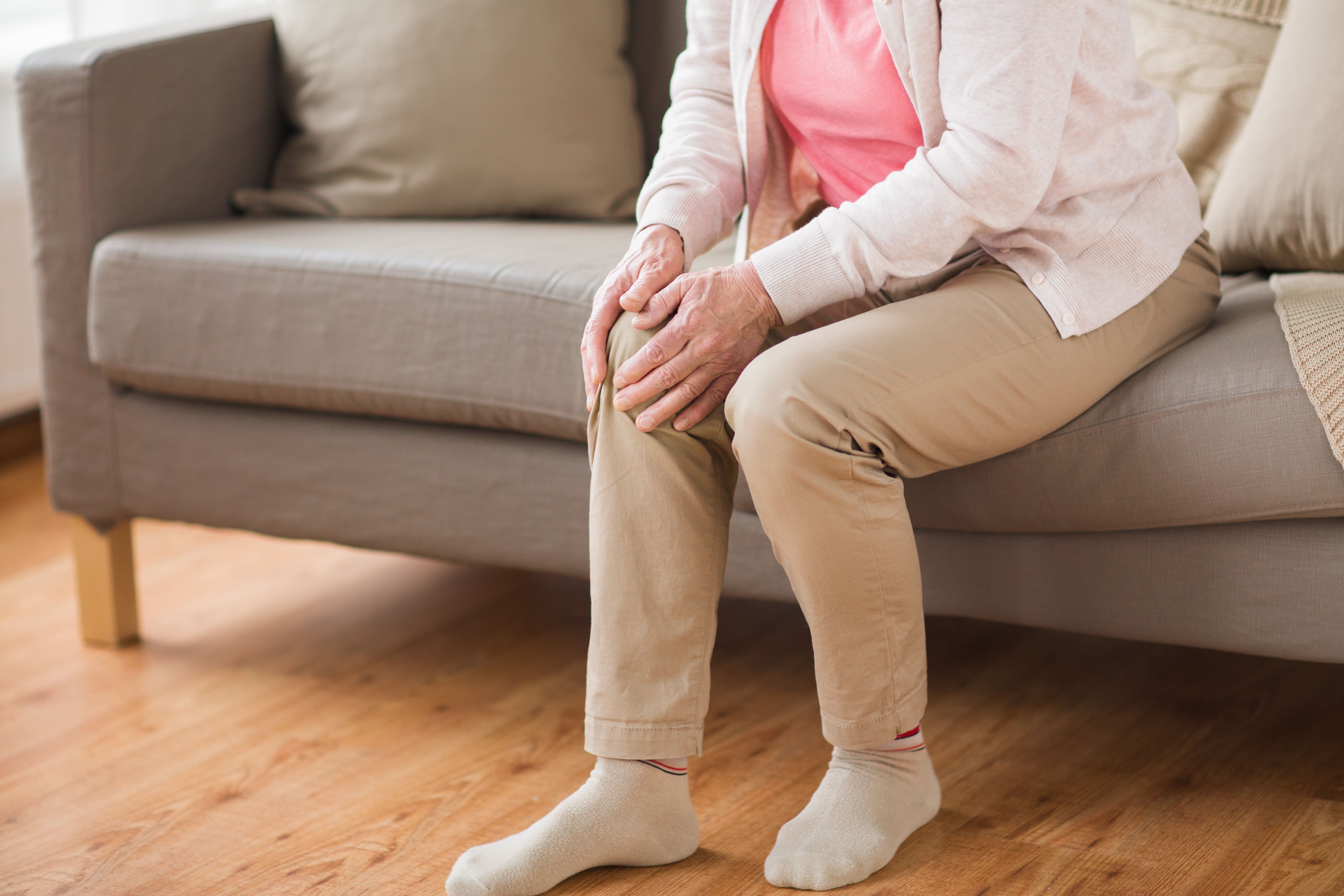Asset Publisher
Pain Management for Older Adults with Dementia
By Julie Hayes | 08/15/2023

An older adult massaging their knee
Just like most other older adults, people with Alzheimer’s and related types of dementia suffer from headaches, stomachaches, toothaches, muscle cramps and other painful conditions that are an uncomfortable part of the aging process. However, an older person with memory loss who suffers from chronic pain may not be able to tell their caregiver how they feel or ask for help to relieve their discomfort. Instead, they may communicate their distress through other means, such as becoming agitated or crying, which their caregiver may not understand how to interpret or address.
This can also be a challenge for caregivers of loved ones with both an intellectual or developmental disability (IDD) and dementia. Research suggests that people with IDD experience pain more frequently and to a greater degree than the neurotypical population. However, they are generally much more limited in their ability to communicate their pain, or have their pain fully recognized by their caregivers. Dementia can further complicate these existing issues and make it even more difficult to identify pain through the other symptoms of dementia and IDD.
Recognizing signs of pain
Identifying pain in older adults with dementia can be difficult. Watch out for signs such as:
- Loud, raspy breathing
- Fidgeting, pacing, rocking back and forth, restlessness
- Difficulty walking
- Irritability
- Changes in sleep patterns
- Refusing to eat
- Moaning, groaning, crying or sighing
- Rubbing the painful area
- Grimacing
- Sudden aggressive behavior
- Avoiding other family members
Preparing for a doctor’s appointment
Recurring or persistent pain is not a normal part of the aging process, or of dementia. It is a sign that something is wrong with your loved one’s physical health that requires the attention of a physician. A doctor can diagnose the cause or causes of a loved one’s painful symptoms and develop a treatment plan that will relieve their discomfort and allow them to lead a more active and pain-free life.
Before the appointment, make a list of your loved one’s symptoms and behavior changes, as well as questions you may have. Bring along a notebook so you can write down what you learn at the appointment. You should have the following information on hand for the doctor:
- When you first noticed pain-related behavior changes
- Where, when and how often instances of pain occur
- What effect pain is having on your loved one’s day-to-day life
- What you think triggers these behaviors
- What situations, activities or events make the behaviors better or worse
- How the behavior changes caused by pain are currently being managed
Side effects of certain pain medicines can also affect an older adult's behavior, so bring along all your loved one’s medications, including prescription and over-the-counter remedies, so the doctor can determine if they might be contributing your loved one’s distress.
Managing pain
A doctor may prescribe medications to control your loved one’s pain, suggest strategies for diverting their attention from their discomfort, and recommend methods of everyday pain management like mild exercise, massage therapy, warm baths, hot or cold packs or heating pads. They may also suggest assistive devices like canes, walkers or splints.
Other non-medical pain relievers include gentle exercises and stretches to improve muscle strength, increase heart and lung fitness, and improve balance. Daily activities will also help your loved one sleep better at night. However, make sure your loved one isn’t overexerting themselves or agitating painful areas. While activity is important, proper rest and relaxation will help your loved one’s body heal.
Pain management is crucial for older adults with dementia or IDD. Recognizing signs of pain, seeking medical attention, and implementing non-medical pain relief strategies can significantly enhance their comfort and overall quality of life. As a caregiver, you play a vital role in understanding and addressing their loved ones' pain, ensuring a better and more pain-free life.
This article was written as a part of the Expansion of Dementia-Capable Communities within Urban and Rural Settings in Ohio using Evidence-Based and Informed Programming project, funded by the Administration for Community Living, Alzheimer’s Disease Program’s Initiative (#90ADPI0052-01-00). Learn more here.
Related Assets
Suggested Reads
A Healthy Back for a Healthy Body: Tips for Managing Back Pain
As we age, we may find ourselves suffering from stiff, painful backs that may prevent us from taking part in the active lifestyle we may have enjoyed when we were younger or healthier. If so, we are not alone. Back pain is one of the most common reasons older ...
Living Well with Arthritis
According to the Arthritis Foundation, about 54 million adults have been diagnosed with arthritis. The first signs of arthritis usually begin around age 40 and progress slowly. Women over 50 are more likely to suffer from arthritis symptoms than men. Even dogs,...
